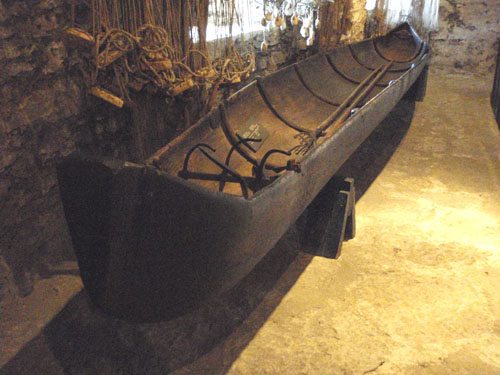
We left Tvedestrand for Oslo for two nights on our way to Estonia, leaving just enough time to take in the city and visit museums. With the dollar weak, Oslo is disarmingly expensive and we were lucky to have Unni’s apartment to ourselves, living on bolle, salami, apples and potato salad as we navigated the city on foot, by ferry and bus. We spent a rainy day at Bygdoy, Oslo’s museum district and home to an astounding collection of artifacts and reconstructions reflecting Norway’s rich maritime and agricultural history. Within a few square kilometers are the Viking Museum, Maritime Museum, Kon Tiki Museum and the extensive Norse Folk Museum.



Wood has been integral to the development of Norse culture, whose technological crown jewel is the Viking ship. Seeing these in the context of folk culture and architecture, I was able to get the perspective of the Viking ship as the culmination of thousands of years of slow improvements in wood technology used in home construction, which evolved from roughly-shaped, stacked logs to frameworks of joined timbers with split boards as siding. I was also able to see the Viking ship as a hybrid invention combining the subtractive shaping of a ‘dugout’ boat with the additive assemblage of an open raft, both vessels being in wide use throughout the region’s prehistory. The resulting keel-boat literally opened up new worlds to the Norsk, and the type of craft continues to evolve to this day. It was truly inspiring for me to witness the concrete manifestation of a culture’s collective effort in woodcraft as pure innovation and as a progenitor of global exploration (and of the exploitation synonymous with the Viking legacy). I was reminded of another adage I’ve developed in my own work:
All vessels originate with an imagined voyage. The best work flows from the desire for a kind of interaction and not from the work for its own sake.

I can think of no better example of this adage than in the work of Thor Heyerdahl, the Norwegian explorer, ethnographer and author. I first saw his films as a kid when my father would drop me off at the UPenn Museum of Anthropology while he made his rounds as Director of Student Health in the late sixties/ early seventies. I was impressed how science could employ traditional craft to make a significant statement and the sheer gumption it took to pull it off. I continue to read Kon-Tiki for inspiration and hold his collective work as a paradigm of Deep Craft.